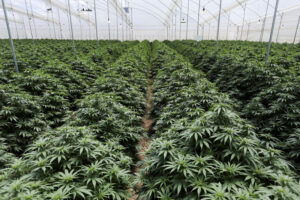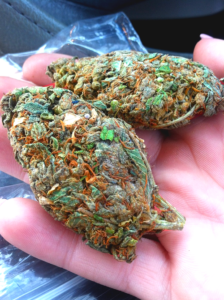
Weed in Molenbeek-Saint-Jean — complete guide.
Quick overview
Molenbeek-Saint-Jean (Sint-Jans-Molenbeek) is one of the 19 municipalities of the Brussels-Capital Region. It’s a dense, multicultural urban area with a rich industrial past and a lively local culture. Like the rest of Belgium, cannabis (often called “weed” or “cannabis”) occupies a complicated legal and social space: personal use has been partially decriminalised in practice, but production, sale and organised distribution remain illegal and can carry criminal penalties. This guide explains what that means on the ground in Molenbeek, gives practical safety and harm-reduction advice, outlines local services and community initiatives, and answers common questions visitors and residents have. (Wikipedia) Weed in Molenbeek-Saint-Jean
Table of contents Weed in Molenbeek-Saint-Jean
- What the law actually says (Belgium & Brussels)
- What that means in Molenbeek
- Where people source cannabis (how people actually buy it)
- Where and how people consume it — dos and don’ts
- Health, safety and harm-reduction
- Community, policing and local services
- Traveller tips and etiquette
- Meta / SEO: suggested meta tag (provided above)
- FAQs (short, practical answers)
- Useful outbound links and resources
1) What the law actually says — direct, practical summary Weed in Molenbeek-Saint-Jean
Belgium’s approach to cannabis is a mixture of prohibition and pragmatic decriminalisation. In short:
- Possession of small amounts for personal use has been largely decriminalised in practice since early-2000s reforms: first-time possession of a defined small amount typically leads to a minor sanction (often a fine) rather than automatic criminal prosecution — but the exact handling depends on the circumstances (public nuisance, amount, repeat offences, aggravating factors). (Wikipedia)
- Sale, trafficking, production (including commercial growing) and large-scale possession remain illegal and are prosecuted. Organised distribution networks are targeted by law enforcement.
2) What this means in Molenbeek — local context Weed in Molenbeek-Saint-Jean
Molenbeek is a dense, working-class municipality within Brussels with a young population and strong community networks. Over the last decades it has been in the news for many complex social issues (urban renewal, integration, crime and policing), which has shaped how policy and enforcement are delivered locally. That history means:
- Public, street-level selling of cannabis has occurred in some neighborhoods, but it’s informal and illegal. Local police operations sometimes target street dealers or organised networks.
- Community groups, NGOs and municipal initiatives in Brussels and Molenbeek focus on social inclusion, youth outreach and harm reduction. These programs aim to reduce the harms of drug markets (violence, exploitation) by offering education, jobs programs and health services. If you’re researching the topic, the local municipal website and Brussels social services pages are useful starting points.
3) How people typically source cannabis in Molenbeek (real world patterns) Weed in Molenbeek-Saint-Jean
Because regulated recreational sale is not available in Belgium, people obtain cannabis in several ways:
- Private networks / friends / acquaintances. This is the most common method for personal users: small private transactions between individuals. These are informal and risky (no quality control).
- Street markets / dealers. Illicit street selling can be found in many cities. This is illegal and associated with criminal enforcement and potential safety concerns.
- CBD shops and legal hemp stores. These sell hemp-derived products with very low THC (below legal thresholds). They are legal businesses but do not sell psychoactive cannabis. If you want CBD oils, capsules or hemp products, legitimate shops and pharmacies are the safe, legal route.
4) Where and how people consume — dos and don’ts
Practical guidance for residents and visitors:
- Private is safer than public. Consuming in private residences reduces the chance of police attention, complaints from neighbours, or public nuisance. Public consumption (on the street, near schools, in parks with children present) increases the risk of fines or intervention.
- DON’T bring large amounts. Carrying amounts that look like distribution will attract prosecution. The “small amount” threshold is not absolute and depends on case law and police practice — better to stay under local tolerated quantities and avoid harboring more than needed for personal use. (Wikipedia)
- Avoid mixing with alcohol or other substances in public settings, especially when unfamiliar with potency. Be mindful of how cannabis affects judgment and coordination.
- If you use vaporizers or e-products, be cautious about unknown cartridges or liquids bought informally — adulterated products have caused serious health incidents in other countries.
- Respect local rules in hospitality venues. Most cafés, bars and restaurants prohibit smoking. Even if someone suggests a private “club” with cannabis, remember it’s not a legal, regulated model like Amsterdam — membership or private rules do not make sale or distribution legal.
5) Health, safety and harm-reduction
Whether you’re a long-term user, occasional user, or visiting and curious, follow harm-reduction basics:
- Start low, go slow. Especially with edibles: effects are delayed and can be much stronger and longer than inhaled cannabis.
- Know your source and potency. Illicit products have variable THC levels; high-strength strains can cause anxiety or panic in inexperienced users.
- Avoid driving or operating machinery while under the influence. Impairment increases accident risk and police enforce driving under the influence.
- If you experience adverse effects (severe anxiety, chest pains, breathing problems, or suspected poisoning) seek medical help immediately. Tell emergency services what you consumed; prompt care reduces risk.
- Mental health considerations. People with a personal or family history of psychosis, schizophrenia or certain mood disorders should be cautious; cannabis can trigger or worsen psychiatric symptoms in susceptible individuals.
- Needle/smoking exchanges and addiction support. Brussels region offers drug-treatment and harm-reduction services; local health centres (centres de santé, CAW/AFS services) can point people to counselling, substitution programs and support.
6) Community, policing and social services in Molenbeek
Molenbeek has many active NGOs, social enterprises and municipal programs that target youth engagement, job training, housing and community safety. These programs are important because they address the root causes that can connect communities to illegal markets.
- Local policing priorities have varied over time; operations tend to focus on organised trafficking, violent crimes, and hotspots. Simple personal use is usually handled more lightly than distribution or crime-linked activity. When community relations are strained, municipal outreach tries to restore trust and offer alternatives.
- Where to find help: If you or someone you know needs addiction support, search for Brussels region health services, local community centres in Molenbeek, or national helplines. Municipal social services and community centres (maisons de quartier) are excellent starting points for local referrals.
7) Traveller tips and etiquette
If you’re visiting Molenbeek (or Brussels) and curious about the local cannabis scene, follow these tips:
- No Amsterdam expectations. Brussels does not have a legal recreational coffee-shop system. What is possible in Amsterdam is not the same in Brussels.
- Respect local sensibilities. Molenbeek is culturally diverse; public consumption may offend or cause alarm in some settings. Be discreet and respectful of shared spaces.
- Avoid buying from strangers on the street. For safety and legal reasons, don’t buy unknown products; buying from an illicit seller has legal and personal safety risks.
- If you’re seeking CBD or legal hemp products, look for licensed CBD shops or pharmacies that sell approved products; avoid unlabelled, illicit “oils” from unknown sellers.
- If you must consume, do it in private and keep quantities modest.
9) FAQs (short, practical answers)
Q1 — Is cannabis legal in Molenbeek?
Short answer: No. Recreational cannabis sale and production are illegal in Belgium. Small personal possession has been decriminalised in practice (subject to conditions and local enforcement), but distribution and organised sale remain criminal. (Wikipedia)
Q2 — Can I buy cannabis in a café or shop in Molenbeek?
No regulated recreational coffee-shops exist in Brussels. You may find CBD/hemp shops selling low-THC legal products, but psychoactive THC products sold openly in cafés would be illegal.
Q3 — What happens if police find me with weed?
It depends on the amount, context and whether aggravating factors exist (public nuisance, proximity to schools, repeat offences, evidence of dealing). Small amounts for personal use may lead to a fine or administrative handling rather than imprisonment, but outcomes vary. (Wikipedia)
Q4 — Are CBD products legal and available?
Yes — legitimate CBD and low-THC hemp products with THC below legal thresholds are sold in specialised shops and sometimes pharmacies. They are not the same as recreational cannabis.
Q5 — Where can I get help if cannabis use is a problem?
Contact local municipal health services in Brussels, community centres in Molenbeek, or national addiction support services. Many NGOs and public health centres provide counselling and harm-reduction services.
Q6 — Are edibles common and safe?
Edibles exist but when bought informally they can be unpredictable in potency. Be cautious: effects are delayed and stronger; start with a small amount. If purchased illicitly, there’s no quality control. (Harm-reduction principle.)
Closing notes & balanced perspective
Molenbeek is a living, evolving community — like many inner-city areas in Europe it faces challenges and is home to creative, resilient communities and initiatives. Cannabis sits at the intersection of public health, law enforcement and social policy; the current Belgian approach mixes limited decriminalisation with strict prohibition on supply. That produces grey areas: people use cannabis in private, some informal street markets exist, but sale and organised distribution remain illegal and targeted by police.
I have used Global Weedworld (Globalweedworld@galaxyhit.com) at least 4-10 times and every time it has been a top notch.
He is the best local plug you can find around. He is very pleasant, friendly and fast. He is a lifesaver.
He sells top shelf WEED and other stuffs at moderate prices. I will always recommend this guy when people ask me my ” go-to”.
All you have to do is follow his instructions.
Just send him an email and I bet you will come back for more once you finish with what you bought because his quality is amazing.
Also Contact him on his telegram link telegramhttps://t.me/GlobalweedWorld
⚠️ Know that he do not have telegram channels only the telegram link above

The strain was exactly what I was looking for. It had that perfect balance, and the high was smooth. Also, the packaging was discreet and professional. Really impressed
I’ve been buying online for a while, but this shop’s service and product quality set them apart.
Everything was fresh, potent, and the customer service is outstanding
My first purchase and I’m hooked.
Excellent product and the customer support was super helpful in answering all my questions. Highly recommend this site
From browsing to checkout, everything was seamless. Delivery was on time, and the product exceeded my expectations.
I’ll be recommending this to my friends
told me that he doesn’t accept cash and i thought he is one of those idiots who took advantages of people but i decided to give him a try by making the payment first using bitcoin, surprisingly he arrived within the time he promised me and i received what i ordered. thank you Global weed world, whenever i return here you will always be my plug without doubt.
I’ve been buying from a lot of different places, but this one stands out. The bud is top-notch, and the prices are reasonable.
Will be ordering again soon! Amazing experience! The product was exactly as described,
and the packaging was on point—safe and odor-free. Thank you!
Third order in a row — flawless. Told my friends — now they’re ordering too. This is how weed buying should be. Clean, easy, reliable.
Delivery was crazy fast, and the product… This place is setting the bar for online weed shops. Keep doing what you’re doing. You’ve got a loyal customer for life.
Best decision I made all week. Real ones know. This site is fire. I don’t usually leave reviews, but this deserved one.
I was worried about ordering online, but the packaging was perfect completely. You can tell they care about their customers. Fast replies and reliable support.